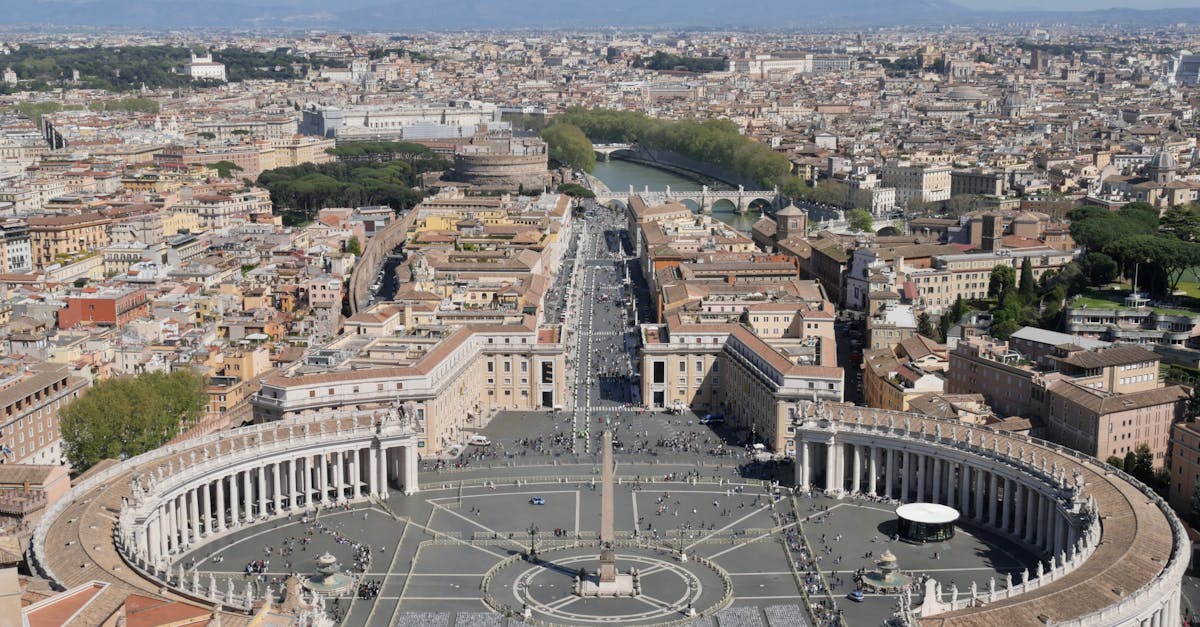
Introduction
In 2025, the eyes of the Catholic world and beyond will turn towards Vatican City as the Papal Conclave prepares to elect a new pope. This momentous event, steeped in tradition, ignites anticipation among the faithful and interests those observing from outside religious circles. A conclave, derived from Latin meaning "with a key," ensures a secretive electoral process, safeguarded from external influences. As preparations intensify within the Vatican, the spiritual and administrative leadership of the Catholic Church is at the forefront. Not only for Catholics, the conclave symbolizes a unity and historical continuity that's been preserved through centuries. The 2025 conclave promises to uphold its profound significance, honoring timeless rituals.
The Historical Importance of the Conclave
The Papal Conclave dates back to the 13th century, evolving from pivotal reforms to counter protracted vacancies in the papacy. Traditionally held within the historic Sistine Chapel, cardinals gather to deliberate over the next spiritual leader of over one billion Catholics worldwide. Its significance transcends religious boundaries, acting as a conduit of continuity from St. Peter to the contemporary papacy. The election protocol, developed meticulously over ages, reflects solemn rites intertwined with intricate decision-making processes. Also, each conclave holds an indivisible tie to its predecessors, ensuring the Church’s enduring legacy.
Eligibility and Cardinal Electors
The apostolic constitution governs the nomination of cardinal electors—senior church figures bestowed with the honor and responsibility to vote. Notably, only cardinals under the age of 80 are entitled to participate, ensuring a robust and informed selection process. While the College of Cardinals includes members from various continents and backgrounds, a stringent commitment to confidentiality unites them. Symbolically reflective of the universal Church, the elector cardinals mirror the inclusiveness and diversity of the Catholic faithful. Furthermore, a two-thirds majority is required to elect a new pope, a testament to the principle of consensus that lies at the heart of the conclave.
Secular and Sacred: The Atmosphere Within
Inside the conclave, every cardinal casts their ballot under Michelangelo’s mesmerizing frescoes, as whispers of prayer fill the hallowed space. Rigorous protocols dictate the votive procedure, with ballots scrutinized by appointed cardinal scrutineers. Communication with the outside world remains sealed until the election concludes, ensuring complete focus on the divine mission. The conclave merges the sacred intensity with a keen sense of duty, maintaining its ethereal ambiance. Until a new pope is elected, black smoke billows from the Sistine Chapel’s chimney—turning white only when the Holy See makes its decisive selection.
The Weight of Decision: Electing a Leader
Electing a new pope is arguably one of the most consequential decisions made within Christian leadership. The pope assumes the daunting role of spiritual ambassador, key to healing global rifts and guiding the Church through contemporary trials. In recent conclaves, attention towards addressing issues such as modernism, Church unity, and interfaith dialogue has intensified. Each papal candidate’s background, theology, and envisioned path for the Church bear intense scrutiny. Hence, the cardinals strive to navigate the delicate balance between preserving core doctrines and adapting to evolving societal needs.
Modern Challenges in the Papal Selection
In the 2025 conclave, cardinals face new challenges, including maintaining continuity amidst modernity's rapidly shifting landscape. As social justice, technological innovation, and environmental concerns increasingly influence spiritual discourse, cardinals seek to choose a pope resonant with both tradition and contemporary priorities. The next pontiff must adeptly mediate between skeptical modernity and ritual-rich orthodoxy to foster engagement across church lines. As globalization narrows distances, the papal election signifies a landmark step towards a harmonious and inclusive Church.
Communicating the Outcome: Signaling Change
Conclave outcome announcements adhere to ceremonial flair: the age-old smoke signals followed by formal declaration from the Vatican balcony. "Habemus Papam" ("We have a pope") marks the climactic disclosure delivered by the senior cardinal deacon. Following his announcement, the new pope appears to greet and bless the waiting crowd, the event broadcasted globally through various media. Amidst cheers, prayers resonate with the faithful, celebrating a new chapter in papal history. The elected pope personifies a fresh commitment towards shepherding the global faithful with faith and reverence.
Media and Public Fascination
Despite its closed-door nature, the papal conclave captivates global audiences, embodying an intersection of faith, intrigue, and tradition. Media coverage extends beyond religious circles, attracting curiosity due to the secrecy and historical weight inherent in the proceedings. Journalists and analysts explore cues, papabile "potential pope" predictions, and pontifical impacts, capturing public imagination. Through its somber rituals and solemnity, the conclave resonates with individuals seeking continuity within a rapidly changing world. Perceptions of papal influence push interest beyond religion, stirring discourse touching politics, culture, and societal leadership.
The New Pope: Stepping into History
Upon election, the new pope transitions from a cardinal amongst peers to the Supreme Pontiff, a pivotal transformation necessitating spiritual fortitude and leadership acumen. He assumes command of Catholic doctrine, moral guidance, and intricate liturgical traditions, charting the path for future ecclesiastical growth. Rooted in Christian values, the papal office offers a beacon of steady hope to a diverse world hungering for direction and compassion. As the Catholic Church’s face and voice, the pope bears the delicate task of nurturing global harmony, advocating justice, and kindling interfaith dialogues. The 2025 conclave ensures the selection of a steward responsive to historical challenges with contemporary relevance.
Conclusion
The 2025 Papal Conclave exemplifies a crossroads between tradition and modernity, as it prepares to elect a pope in the dynamic 21st century. The conclave not only revives age-old customs but also propels aspirations for renewal. As an event uniting faith and fascination, its outcomes remain essential to believers and observers alike. This convergence of sacred history and present discoveries underscores the timeless continuity of the Catholic Church's legacy. Ultimately, the conclave reassures the faithful that while times change, the profound mission guiding the papacy endures resolutely.